In the silent embrace of the earth, ancient mass graves stand as poignant markers of humanity’s enduring struggles. These somber resting places, unearthed by the hands of archaeologists, offer a glimpse into the past, where sorrow and resilience intertwine. As we step back in time, we explore a compendium of ancient mass graves that bear witness to the hardships of bygone eras.
1. JEBEL SAHABA MASSACRE (C. 13000 BC)
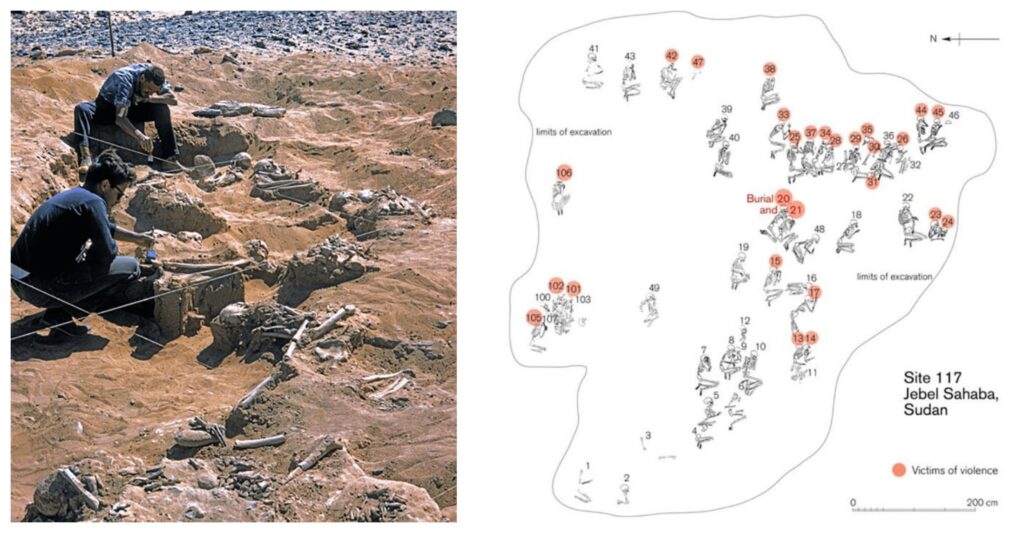
Along the banks of the Nile River in Sudan, the Jebel Sahaba site reveals the aftermath of a prehistoric conflict. With remains dating back around 13,000 years, this mass grave unveils evidence of intergroup violence—a chilling reminder of humanity’s early struggles for survival and dominance.
The site, named after the nearby village of Jebel Sahaba, contains the remains of at least 61 individuals who were victims of a violent attack. The massacre is believed to have occurred around 13,000 years ago during a time of changing climate and resource scarcity. The discovery of this site provides valuable insights into the social dynamics and violence of early human societies.
2. TALHEIM DEATH PIT (C. 5000 BC)
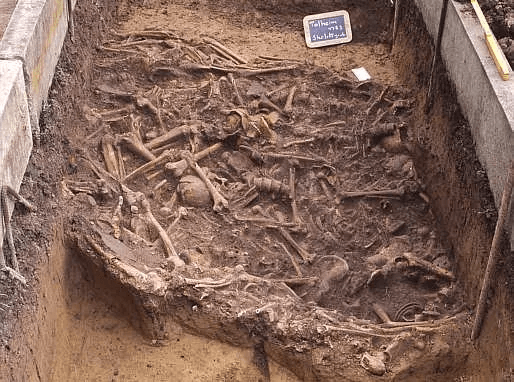
In a Neolithic village in Germany, the Talheim Death Pit exhumed 34 skeletons, bearing testament to a violent altercation. Men, women, and children lay together, preserving echoes of an ancient massacre that reshaped a community’s fate.
The pit provides valuable insights into the violence and warfare that existed during the Neolithic period. The victims had suffered multiple injuries, including skull fractures and stab wounds. The discovery of weapons and tools in the graves suggests that these individuals were part of a warrior society. The Talheim Death Pit is an important site for understanding ancient conflicts and social dynamics.
3. KNOSSOS KOUMASA BURIAL (C. 1200–1100 BC)
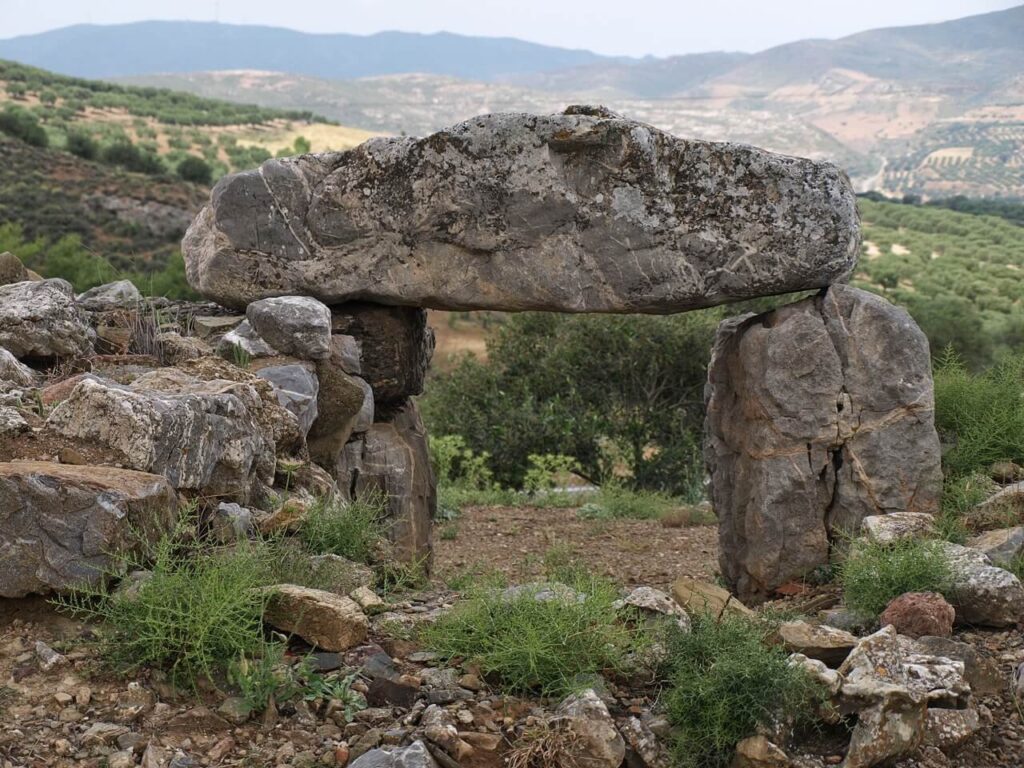
Crete’s embrace cradles a burial site that unveils Minoan rituals. The Knossos Koumasa Burial yielded a collective grave adorned with treasures, shedding light on an ancient civilization’s beliefs and practices.
Knossos Koumasa Burial lies near the ancient city of Knossos in Crete. This burial site is of great archaeological importance as it provides valuable insights into the burial practices and cultural traditions of the Minoan civilization. Excavations at Knossos Koumasa Burial have uncovered numerous tombs, including chamber tombs and rock-cut tombs, as well as various burial offerings such as pottery, jewelry, and weapons. These discoveries shed light on the social structure, religious beliefs, and artistic expressions of the Minoans and contribute to our understanding of this ancient civilization. Google can
4. UR ROYAL CEMETERY (C. 2600–2100 BC)
Within the Mesopotamian city of Ur, an opulent past beckons. Royals rest in splendor in this cemetery, their treasures and the tomb of Queen Puabi attesting to a stratified society’s grandeur.
5. HITTITE EMPIRE MASS GRAVES (C. 1200 BC)
Turkey’s landscape carries echoes of the Hittite Empire’s downfall. A mass grave near Alacahöyük cradles the remains of soldiers who fell in the empire’s twilight, a testament to the chaos of collapsing civilizations.
These findings have provided valuable insights into Hittite society, culture, and burial practices. The graves contain the remains of numerous individuals, potentially indicating the occurrence of violent events or epidemics in the past. The findings offer a unique window into the lives and deaths of the Hittite people, shedding light on their beliefs, social structures, and historical events. Further research and analysis of these mass graves will undoubtedly contribute to our understanding of the Hittite Empire and ancient civilizations as a whole.
6. THEBES TOMBS (C. 2000–1000 BC)
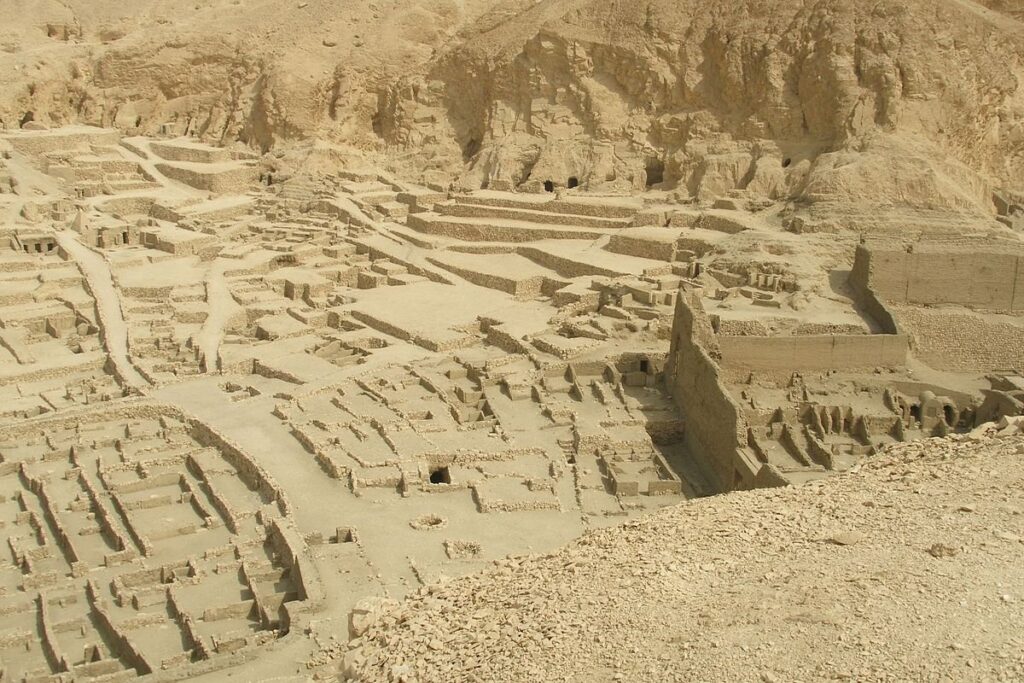
The Thebes Tombs are an ancient burial site located in Thebes, Egypt. They are known for their intricate designs and historical significance. The tombs date back to the Pharaonic period and provide insight into the cultural practices and beliefs of the ancient Egyptians. Visiting the Thebes Tombs offers a unique opportunity to explore the rich history of Egypt and appreciate the artistry and craftsmanship of the ancient civilization. Whether you are an archaeology enthusiast or simply interested in learning more about Egypt’s past, a visit to the Thebes Tombs is sure to be a memorable experience.
Egypt’s timeless sands hold tales of eternity. Thebes’ tombs, whether for pharaohs or commoners, offer insights into burial practices and cultural shifts that span centuries.
7. THE TOLLUND MAN BOG BODIES (C. 400 BC)
Denmark’s bogs cradle a chilling relic—the Tollund Man and his fellow bog bodies. Preserved by peat, these ancient remains illuminate Iron Age rituals and sacrifices.
The Tollund Man and other bog bodies are a fascinating archaeological find. These incredibly preserved bodies were discovered in peat bogs, primarily in Denmark. The Tollund Man, in particular, is a well-known example. He was found in 1950 and is estimated to be over 2,000 years old. The conditions in the bogs have created a natural mummification process, allowing scientists to gain insight into ancient cultures and the lives of these individuals. The bog bodies provide valuable information about ancient rituals, clothing, and even cause of death. They continue to be a subject of study and intrigue in the field of archaeology.
9. THE ANCIENT GREEK MASS GRAVE OF PHALAERON
Archaeologists have discovered a mass burial in the ancient port city of Phalaeron, near Athens, with 80 skeletons lined up next to each other, with 36 bound in iron shackles. Some researchers believe they may be followers of Cylon, a tyrant who attempted to take over Athens in the 7th century B.C.
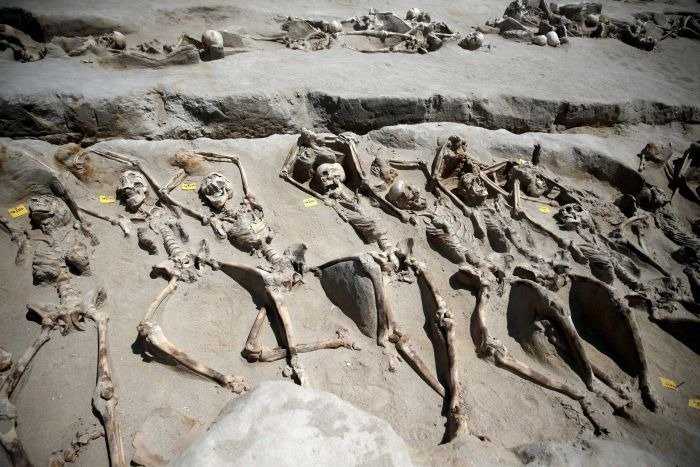
The grave was discovered in an area being developed for the new National Library of Greece and the Greek National Opera. Two small vases found among the shackled skeletons allowed scientists to date the grave between 650 and 625 B.C., an era full of turmoil for Athens. The teeth of the skeletons show that they were mostly younger people in good health, which boosts the theory that they were political rebels who tried to take over Athens. The remains of people who were part of the Coup of Cylon in 632 B.C. are not entirely certain, as historical records are spotty for that century. However, the skeletons may provide insight into the lives of working-class Athenians of the period.
